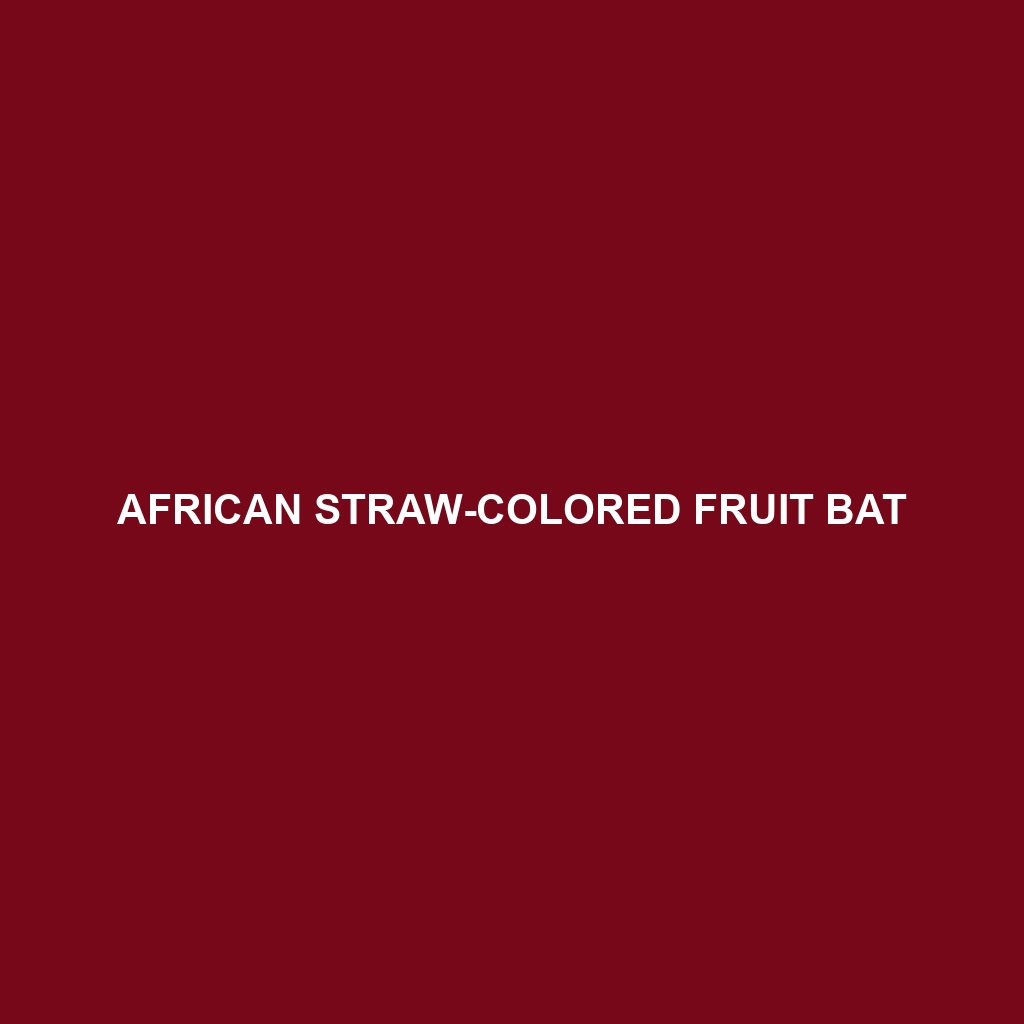African Straw-colored Fruit Bat
Common Name: African Straw-colored Fruit Bat
Scientific Name: Eidolon helvum
Habitat: The African Straw-colored Fruit Bat is primarily found in various tropical and subtropical regions across Africa. Its preferred habitats include forests, woodlands, and urban areas, particularly near fruit trees. This species thrives in countries such as Ghana, Nigeria, and Tanzania, frequenting areas that provide ample roosting sites and foraging opportunities.
Physical Characteristics: African Straw-colored Fruit Bats are medium-sized bats, measuring approximately 23 to 30 cm in length with a wingspan of up to 78 cm. Their fur is primarily straw-colored, with some individuals showcasing darker brown shades on their backs. They possess large ears and a distinctive face with a short, broad muzzle, which aids in their foraging activities. Their unique coloration and size make them easily identifiable among bat species.
Behavior: These bats are highly social creatures, often forming large colonies that can consist of thousands of individuals. They exhibit nocturnal behaviors, emerging at dusk to forage for food. African Straw-colored Fruit Bats are known for their impressive flying capabilities, often covering long distances in search of ripe fruits. They utilize echolocation to navigate and locate food in the dark.
Diet: The African Straw-colored Fruit Bat primarily feeds on ripe fruits such as figs, bananas, and mangoes. Their role as seed dispersers is vital for the propagation of many tropical trees. During the fruiting season, they may travel significant distances to access food, making them important for maintaining the health of their preferred habitats. Their feeding habits significantly impact forest regeneration.
Reproduction: Breeding typically occurs once a year, with females giving birth to a single pup after a gestation period of approximately 3 to 4 months. The newborns are nursed for several weeks before they are fully independent. Breeding often coincides with the fruiting seasons, which provides mothers with abundant food sources to care for their young. Parental care is predominantly provided by the mothers, who will roost together to protect their pups.
Conservation Status: The African Straw-colored Fruit Bat is currently classified as “Least Concern” by the IUCN, indicating that it is not currently facing significant threats. However, habitat loss due to deforestation and urbanization poses substantial risks to their populations. Conservation efforts are necessary to ensure their continued presence in their natural habitats.
Interesting Facts: African Straw-colored Fruit Bats are known for their remarkable social structures, sometimes roosting in colonies of up to 100,000 individuals. Their unique vocalizations, which include a range of clicks and whistles, facilitate communication among colony members. Additionally, these bats are considered significant cultural symbols in various African communities, often represented in folklore and art.
Role in Ecosystem: As crucial pollinators and fruit dispersers, African Straw-colored Fruit Bats play an essential role in maintaining the health and biodiversity of their ecosystems. Their foraging behaviors promote the growth of various fruit-bearing plants, supporting not only their species but also other wildlife that depend on these trees for food. By contributing to forest regeneration, they help sustain ecological balance within their habitats.
